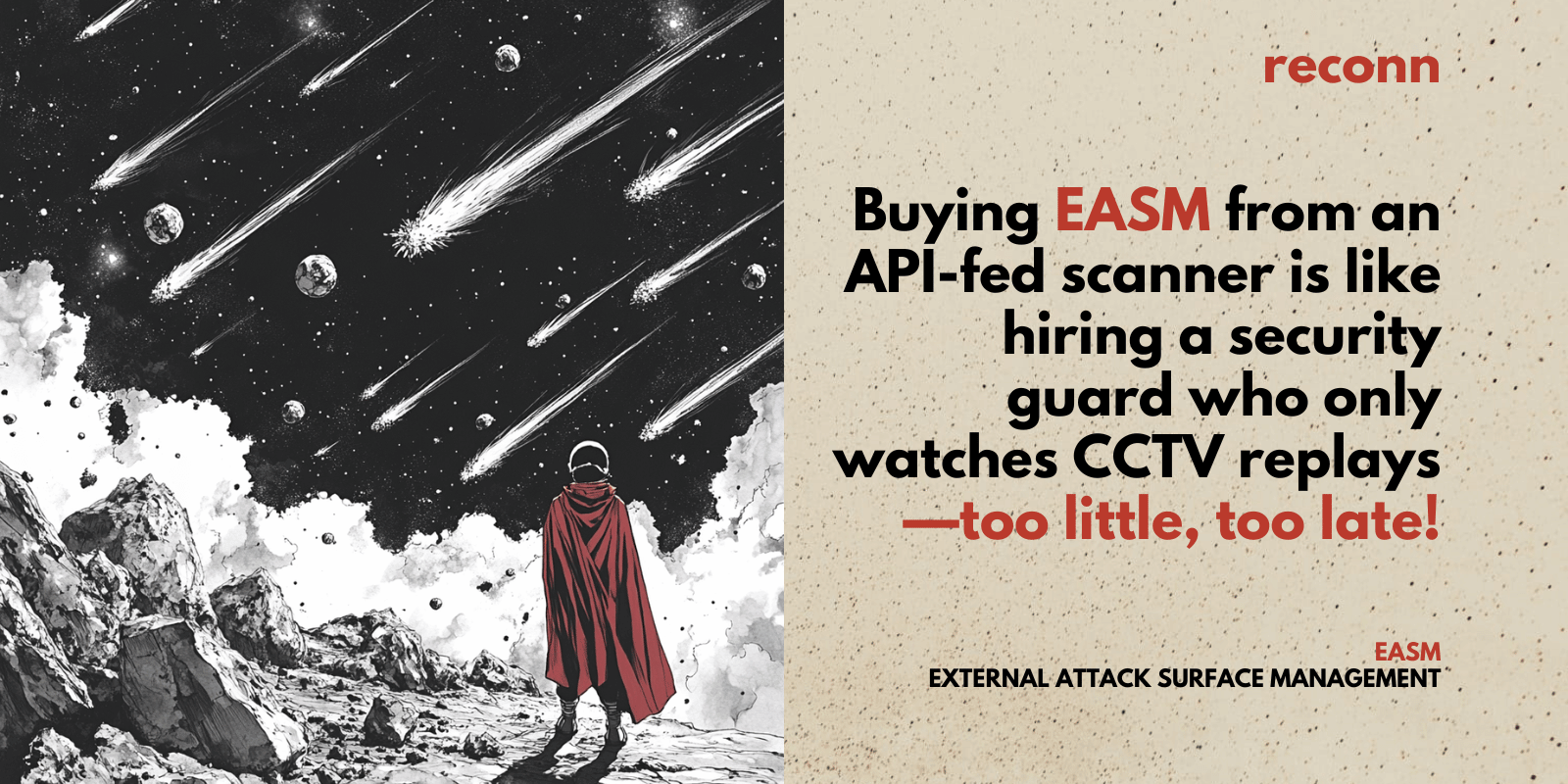Introduction: The Urgency of External Attack Surface Management in MEA
The Middle East and Africa (MEA) region is rapidly evolving in terms of digital transformation, but this growth comes with unique cybersecurity challenges. Organizations in MEA face increasing cyber threats, yet their attack surface management often remains unmonitored due to regional infrastructure gaps, regulatory constraints, and limitations of global cybersecurity vendors.
Traditional security measures such as quarterly penetration testing and annual vulnerability management assessments provide only a point-in-time snapshot of security. The external attack surface management market is rapidly growing as organizations seek attack surface solutions that enable continuous monitoring, discovery, and assessment of an organization’s external internet-connected assets for potential attack vectors. However, most attack surface management solutions are designed with a Western market focus, leaving organizations in the MEA region with limited visibility into their organization’s attack surface.
Table of Contents
Key Challenges of EASM in the MEA Market
Limited IP Coverage by Western Vendors
Many US and European attack surface management vendors focus heavily on scanning North American and European IP ranges, leading to gaps in MEA-specific scanning.
Shadow IT and exposed assets in the MEA region are often undetected unless they are hosted on Western cloud services.
Organizations in MEA require regionally optimized scanning, but most vendors fail to comprehensively index local IP blocks.
Regulatory and Compliance Barriers
Many countries in the MEA region impose strict regulatory requirements that restrict real-time scanning of digital assets.
Laws around data sovereignty and government control over internet infrastructure make unrestricted EASM scanning legally challenging.
Global attack surface management solutions often struggle to comply with industry standards and frameworks such as the NCA (Saudi Arabia), TDRA (UAE), POPIA (South Africa), and NDPR (Nigeria).
Language and Cultural Barriers in Security Reporting
MEA organizations often require Arabic, French, or local language support in cybersecurity tools, which most EASM solutions do not provide.
Security teams in the region need customized security reports that align with local risk management frameworks instead of using generic Western-based standards.
Without localized security awareness, misinterpretation of EASM findings can lead to poor decision-making in mitigating risks.
Lack of Localized Threat Intelligence and Data Feeds
Western EASM solutions rely heavily on threat intelligence feeds focused on cyber threats against Western enterprises.
MEA organizations face region-specific cyber threats, including:
State-sponsored attacks targeting critical infrastructure
Threat actors exploiting regional geopolitical conflicts
Localized cybercriminal syndicates targeting banking and telecom sectors
Without MEA-specific threat intelligence integration, organizations lack real-world prioritization of vulnerabilities.
Infrastructure Challenges and Cloud Adoption Gaps
The MEA market consists of a mix of highly digital nations and regions still relying on legacy IT and on-premises solutions.
Most Western EASM solutions are cloud-first, but many MEA enterprises still operate in hybrid or on-premises environments.
Without adaptable scanning methodologies, attack surface solutions fail to detect potential threats in hybrid infrastructure setups.
Rise of Poor-Quality EASM Vendors
The increasing demand for attack surface management has led to the rise of vendors with subpar capabilities, many of whom simply integrate with known internet scanners (Shodan, Censys, BinaryEdge) via APIs and claim to provide EASM.
These vendors fail to offer comprehensive attack surface management, lacking both EASM and true vulnerability management capabilities.
Organizations that rely on such low-quality solutions often end up with an incomplete security posture, missing critical vulnerabilities and potential attack vectors, misconfigurations, and third-party risks.
Real EASM goes beyond passive data collection and requires AI-driven proactive cybersecurity measures, manual validation, and real-world attack vectors simulation.
Choosing the Right EASM Vendor: Who's Behind the Dashboard?
Not all EASM vendors are created equal. When selecting an EASM provider, organizations must look beyond flashy dashboards and automated API integrations.
Who is building the platform? Are the founders and team members well-known offensive security specialists, bug bounty experts, and internet scanning researchers?
Or is the product merely built by a group of engineers creating a dashboard that pulls third-party API scan data?
A legitimate EASM solution requires deep expertise in offensive security, penetration testing, and adversary simulation—not just an interface displaying results from public threat intelligence feeds.
Many so-called EASM providers fail in both EASM and vulnerability management, offering a false sense of security while overlooking real-world security risks.
The Growth of the Global Attack Surface Management Market
The global attack surface management market is seeing rapid market growth, with major players like Palo Alto Networks entering the space. However, many solutions focus solely on the global market and neglect regional market sizes and market segments such as MEA and Latin America.
Organizations are turning to attack surface management as part of their threat management strategy to effectively address vulnerabilities. Market research reports suggest that attack surface management helps organizations mitigate risks by detecting unknown assets and reducing the risk of data breaches.
How Reconn Bridges the EASM Gap in MEA
At Reconn, we work with leading EASM vendors who not only provide automation but also have an active offensive security mindset. Our vendors:
Are CREST-approved and recognized in the global offensive security community.
Are prominent figures in the bug bounty space, reporting high-impact vulnerabilities.
Are frequent speakers at Black Hat, DEF CON, and other leading cybersecurity conferences.
Conduct regular security training at Black Hat, Nullcon, and other global summits.
Specialize in scanning and mapping external attack surfaces specifically for the Middle East and Africa, ensuring accurate and locally relevant visibility.
Do not rely solely on passive API-based data collection but use real-world attack methodologies to uncover security risks.
The Future of EASM in MEA: A Call for Effective Attack Surface Management
Organizations in the Middle East and Africa can no longer afford to rely solely on quarterly penetration tests or Western-biased scanning tools. The cyber threat landscape is evolving too rapidly, and security must be continuous, contextual, and regionally tailored.
To stay ahead of emerging threats, MEA enterprises need EASM solutions that combine automation with AI-driven proactive cybersecurity measures, ensuring real-time visibility into their entire attack surface.
At Reconn, we help organizations in MEA move beyond outdated ASM solutions and embrace a truly offensive, effective attack surface management approach. Contact us today to discover how our specialized regional attack surface management solutions can mitigate risks and enhance your security posture.

Stay Ahead or Stay Hacked: The CTEM Advantage
Cyber threats don’t wait, so why should you? reconn’s Continuous Threat Exposure Management (CTEM) keeps you ahead with:
EASM – Find what’s exposed before attackers do.
RBVM – Fix what actually matters, not just what’s loud.
ASPM – Secure apps at every stage, not just before release.
CSPM – Cloud misconfigs? Not on our watch.
PTaaS – Real-world attack simulations, on demand.


